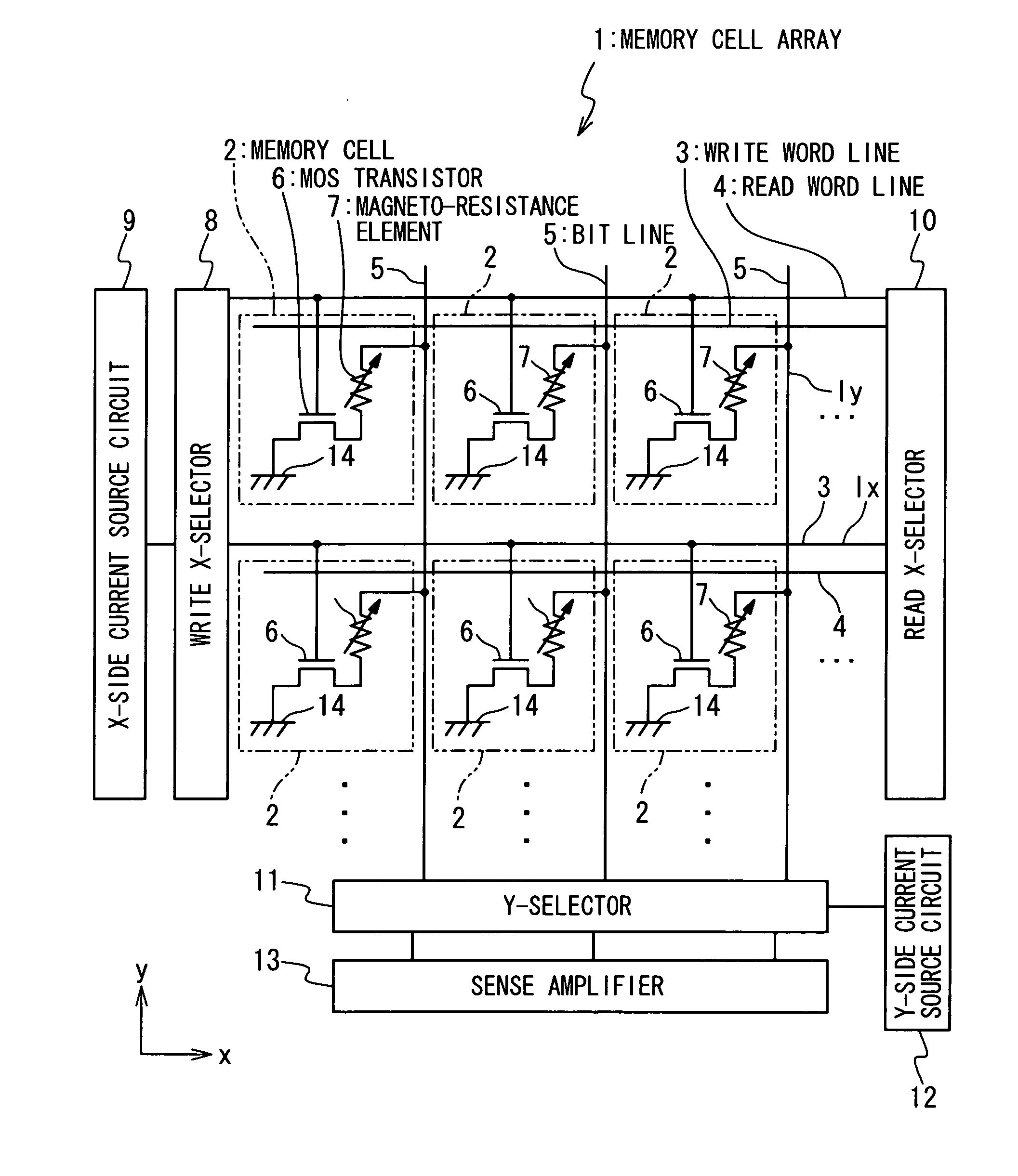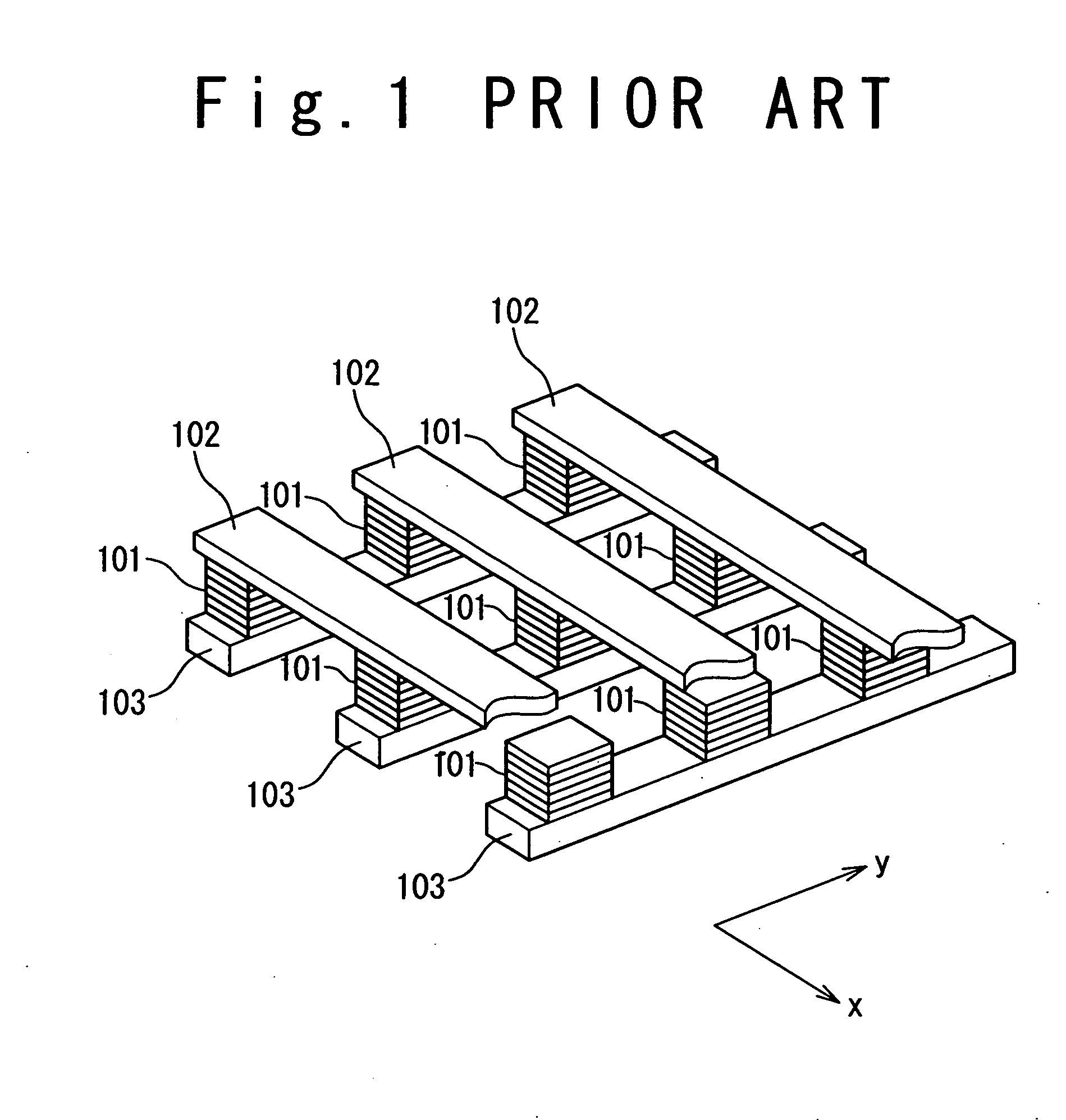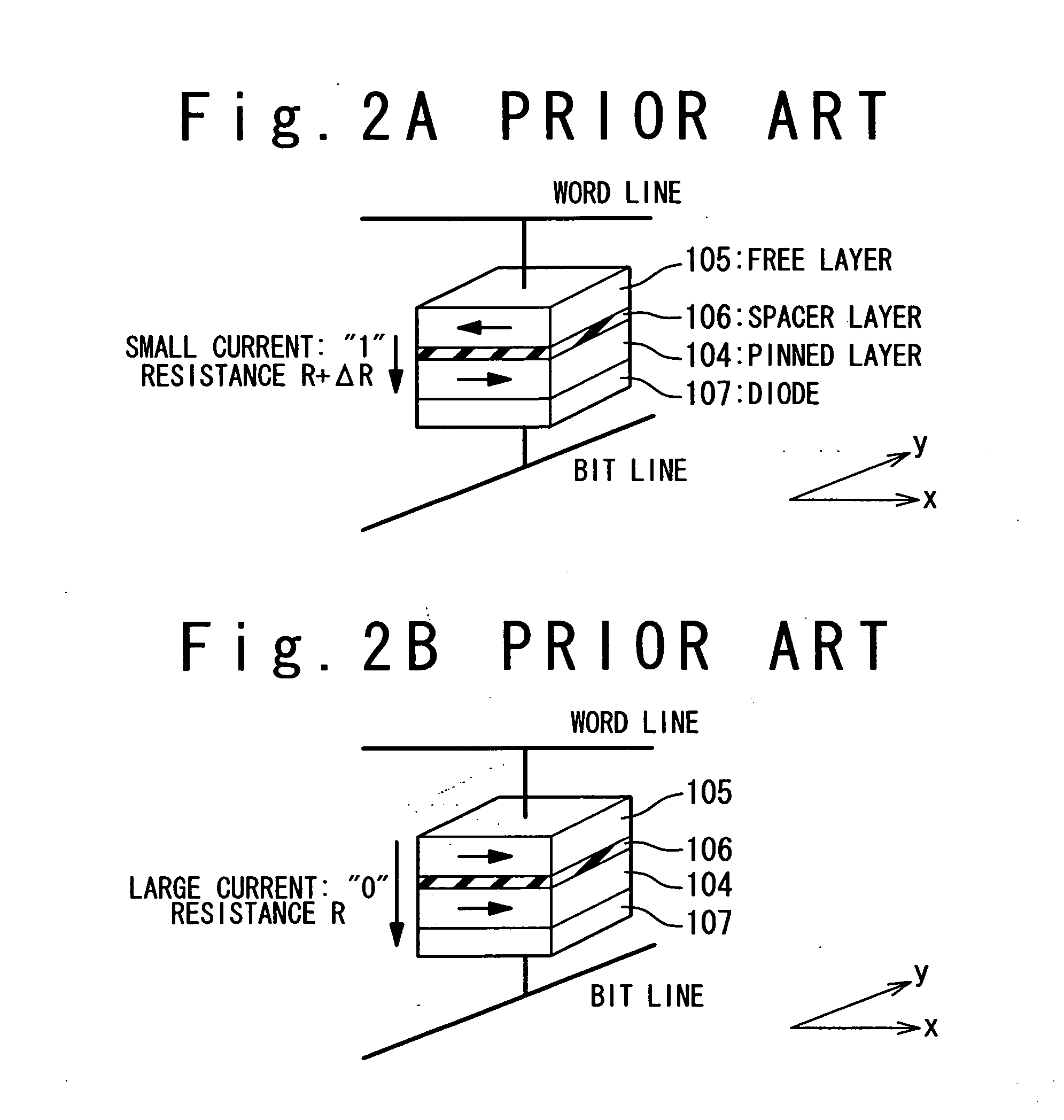Magnetic random access memory
a random access and memory technology, applied in static storage, digital storage, instruments, etc., can solve the problems of increasing the power consumption of the write operation of the data into the mram, hard to avoid changes of the write current flowing through the selected bit line and the selected word line, and achieve the effect of improving the selectivity of the memory cell and stabilizing the write operation
- Summary
- Abstract
- Description
- Claims
- Application Information
AI Technical Summary
Benefits of technology
Problems solved by technology
Method used
Image
Examples
first embodiment
[0081] As shown in FIG. 4, the MRAM according to the first embodiment of the present invention is provided with a memory cell array 1 in which memory cells 2 are arranged in a matrix. Write word lines 3 extending in the X-axis direction, read word lines 4 provided in parallel with the write word line 3 and bit lines 5 extending in the Y-axis direction are arranged in the memory cell array 1. The X-axis direction is substantially perpendicular to the Y-axis direction. Herein, it should be noted that the term “X axis direction” contains both a positive direction of the X-axis (+X direction) and a negative direction of X-axis (−X direction), and the term “Y axis direction” contains both a positive direction of the Y-axis (+Y direction) and a negative direction of the Y-axis (−Y direction). The memory cells 2 are respectively provided at the intersections of the write word lines 3 and the bit lines 5.
[0082] The memory cell 2 contains a MOS transistor 6 and a magneto-resistance element ...
second embodiment
[0116]FIG. 14 shows the MRAM according to the second embodiment of the present invention. The MRAM according to the second embodiment has a circuit configuration in which the transistor is not contained in the memory cell, and which contains so called a cross point cell array.
[0117] The MRAM according to the second embodiment is provided with the cross point cell array 41 in which the memory cells 42 are arranged in a matrix. Word lines 43 extending in the X axis direction and bit lines 44 extending in the Y axis direction are arranged on the cross point cell array 41. The memory cells 2 are respectively formed at the intersections of the word lines 43 and the bit lines 44. The memory cell 42 contains a magneto-resistance element 45. The magneto-resistance element 45 has reversible spontaneous magnetization and holds data according to the direction of the spontaneous magnetization. Each of the magneto-resistance elements 45 is interposed between the word line 43 and the bit line 44...
third embodiment
[0142] Next, with reference to FIGS. 21 and 22, the MRAM due to the third embodiment of the present invention will be described. As shown in FIGS. 21 and 22, in the MRAM due to the third embodiment, the arrangement of the magneto-resistance element 45 and the ferri-magnetic laminate structure 55 are changed. As shown in FIG. 21, in the sectional structure of the memory cell 42, the positions of the magneto-resistance element 45 and the ferri-magnetic laminate structure 55 are exchanged. As shown in FIG. 22, the ferri-magnetic laminate structure 55 has a substantial elliptical plane shape. The long axis of the ferri-magnetic laminate structure 55 is inclined by an angle θ from the X-axis. Typically, the angle θ is 45 degrees. The structure of other portion of the MRAM according to the third embodiment is the same as the second embodiment. The circuit of the MRAM according to the third embodiment is the same as the circuit of the MRAM according to the second embodiment shown in FIG. 1...
PUM
 Login to View More
Login to View More Abstract
Description
Claims
Application Information
 Login to View More
Login to View More - R&D
- Intellectual Property
- Life Sciences
- Materials
- Tech Scout
- Unparalleled Data Quality
- Higher Quality Content
- 60% Fewer Hallucinations
Browse by: Latest US Patents, China's latest patents, Technical Efficacy Thesaurus, Application Domain, Technology Topic, Popular Technical Reports.
© 2025 PatSnap. All rights reserved.Legal|Privacy policy|Modern Slavery Act Transparency Statement|Sitemap|About US| Contact US: help@patsnap.com



